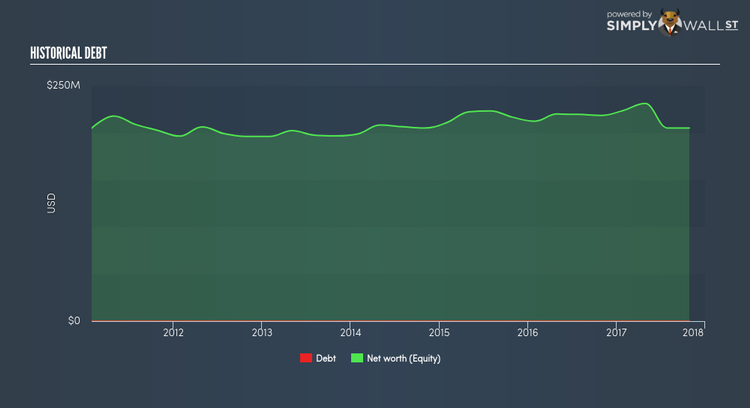Why Citi Trends Inc (NASDAQ:CTRN) Has Zero-Debt On Its Balance Sheet

Zero-debt allows substantial financial flexibility, especially for small-cap companies like Citi Trends Inc (NASDAQ:CTRN), as the company does not have to adhere to strict debt covenants. However, it also faces higher cost of capital given interest cost is generally lower than equity. While zero-debt makes the due diligence for potential investors less nerve-racking, it poses a new question: how should they assess the financial strength of such companies? I will go over a basic overview of the stock’s financial health, which I believe provides a ballpark estimate of their financial health status. Check out our latest analysis for Citi Trends
Is CTRN growing fast enough to value financial flexibility over lower cost of capital?
Debt capital generally has lower cost of capital compared to equity funding. But the downside of having debt in a company’s balance sheet is the debtholder’s higher claim on its assets in the case of liquidation, as well as stricter capital management requirements. CTRN’s absence of debt on its balance sheet may be due to lack of access to cheaper capital, or it may simply believe low cost is not worth sacrificing financial flexibility. However, choosing flexibility over capital returns is logical only if it’s a high-growth company. A single-digit revenue growth of 1.66% for CTRN is considerably low for a small-cap company. More capital can help the business grow faster. If CTRN is not expecting exceptional future growth, then the decision to avoid may cost shareholders in the long term.
Does CTRN’s liquid assets cover its short-term commitments?
Since Citi Trends doesn’t have any debt on its balance sheet, it doesn’t have any solvency issues, which is a term used to describe the company’s ability to meet its long-term obligations. But another important aspect of financial health is liquidity: the company’s ability to meet short-term obligations, including payments to suppliers and employees. With current liabilities at $100.4M liabilities, the company has been able to meet these commitments with a current assets level of $237.3M, leading to a 2.36x current account ratio. For specialty retail companies, this ratio is within a sensible range since there is a bit of a cash buffer without leaving too much capital in a low-return environment.
Next Steps:
Are you a shareholder? CTRN’s soft top-line growth means having no debt on its balance sheet isn’t necessarily the best thing. As shareholders, you should try and determine whether this strategy is justified for CTRN, and why financial flexibility is needed at this stage in its business cycle. You should take a look into a future growth analysis to account for what the market expects for the company moving forward.
Are you a potential investor? CTRN’s health in terms of financial liquidity should ease potential investors’ concerns. However, its soft revenue growth could hurt returns, meaning there is some benefit to looking at low-cost funding alternatives. Keep in mind I haven’t considered other factors such as how CTRN has been performing in the past. For your next step, you should take a look at CTRN’s past performance to figure out CTRN’s financial health position.
To help readers see pass the short term volatility of the financial market, we aim to bring you a long-term focused research analysis purely driven by fundamental data. Note that our analysis does not factor in the latest price sensitive company announcements.
The author is an independent contributor and at the time of publication had no position in the stocks mentioned.

